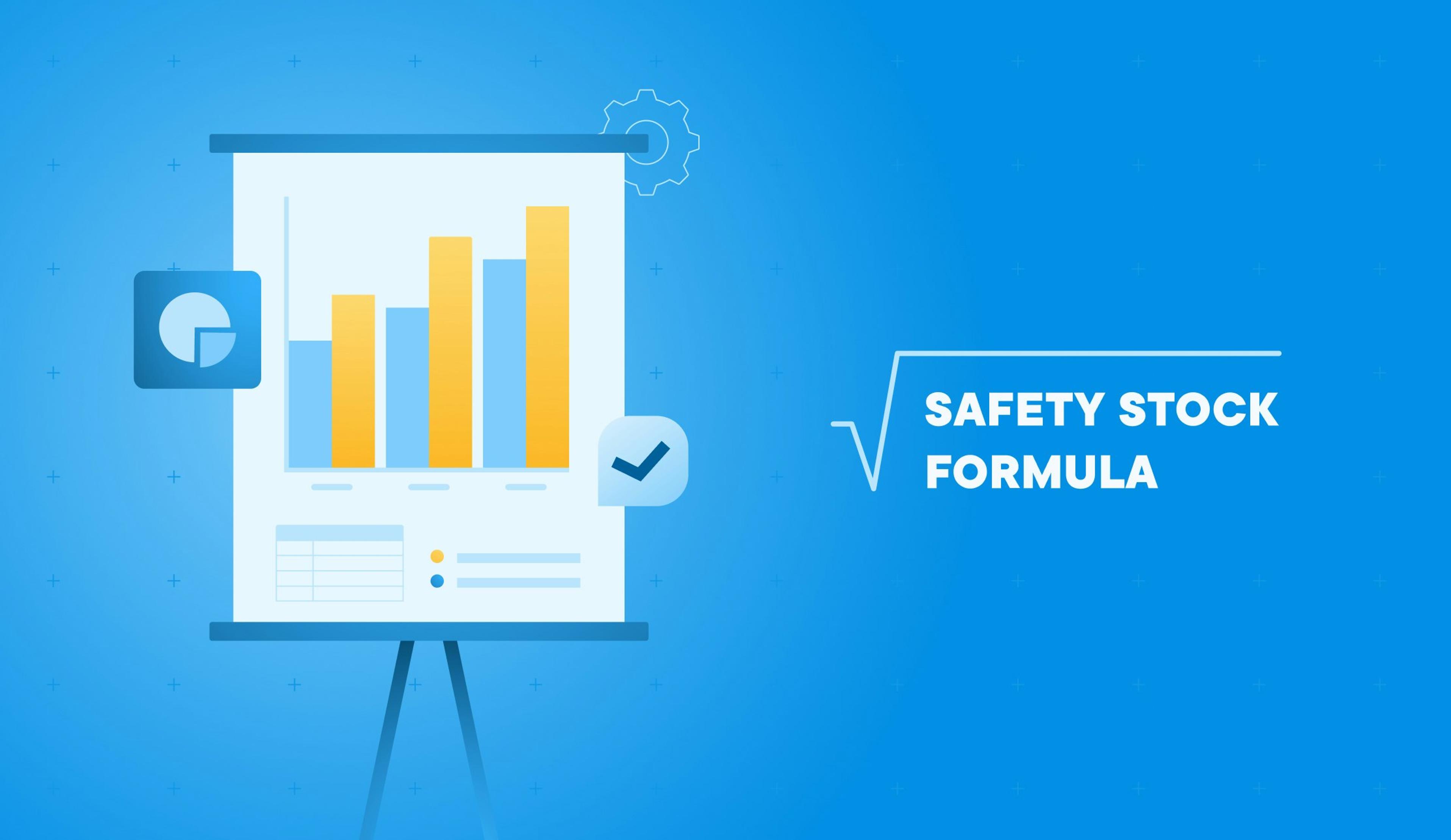What Is Safety Stock? Benefits, Risks, and Formula

Use Circuit for Teams to improve your inventory management by making sure last-mile deliveries reach customers as smoothly as possible.
If you’ve been working in inventory management for longer than five minutes, you’ve learned how unpredictable supply and demand can be.
Safety stock acts as a safety cushion for retailers against stockouts. It’s the extra stock you keep on hand to protect yourself if your supplier goes MIA or your daily sales start surging more than expected.
The big question is how much safety stock to keep on hand. You don’t want too little, but you also don’t want too much.
We’re here to help you figure it out. In this article, we’ll walk you through the benefits and risks of holding safety stock and how to determine the amount to have on hand.
You’ll quickly develop a better idea of your ideal amount of safety stock and understand how having enough stock can protect you from variability in your demand forecast.
Key takeaways
- Safety stock protects your inventory levels from unexpected supply shortages and demand increases that may otherwise lead to stockouts.
- Purchasing safety stock may allow you to lock in favorable material prices.
- The risks of holding too much safety stock include potential obsoletion, high holding costs, and material quality issues.
- You can easily calculate the right amount of safety stock with a simple formula: Safety stock = (Maximum daily use x Maximum lead time) - (Average daily use x Average lead time)

The benefits of having safety stock
Does having safety stock actually make a difference? Of course — if not, this article would suck, and you wouldn’t waste time reading it.
Buying safety stock helps you improve your logistics strategy and service levels. Just a reminder: Among other metrics, your service level reflects how good a job you’re doing at inventory replenishment.
A high service level means you’re keeping the right number of items in stock, while a low service level means you aren’t stocking enough to meet demand. Keep your service factor high by optimizing your safety stock.
Here’s the good news: Effective safety stock replenishment boosts that service level, keeps customers happy, and prevents lost sales.
Let’s talk more about how a little extra inventory can help you maintain your desired service level and excel at supply chain management.
Protection against fluctuations
The only constant with customer demand is that it’s constantly changing. You do your best to project, but the market keeps you on your toes.
You can’t get off the roller coaster, but you can prepare for fluctuating demand by holding safety stock. You’ll be prepared to continue meeting customers’ needs even if demand increases rapidly.
Most importantly, you won’t have to deal with a stockout. That’s a win for everyone involved.
Lock in material prices at a given time
Like average demand, raw material prices are always changing. Obviously, you can’t get too comfortable with the status quo.
There’s still one way to have the upper hand. Let’s say you manufacture automotive parts and a key material you regularly use in operations drops in price.
You can capitalize on the price drop by stocking up in advance — even if you’re not at your reorder point. Saving some cash and keeping your supply levels up can protect you against demand variability.
This level of safety stock protects you against demand fluctuations and puts money back in your pocket for supplies you would have bought regardless. Win-win!
Protection against supply shortages
Sometimes, buying safety stock allows you to capitalize on an opportunity to save money (case in point: the example above). Other times, you need safety stock to protect yourself against future supply shortages.
If that same automotive part from the previous example goes out of stock, it could slow your operations. You could also lose money and customers if you can’t fulfill orders on time.
Safety stock makes supply shortages much less concerning. You’ll have extra materials on hand, and you’ll use your excess inventory to keep things running smoothly.

What are the risks of holding safety stock?
Before filling your entire warehouse with safety stock, let’s add a few disclaimers and unpack the risks of safety stock overstock (say that five times fast).
High holding costs
Hold too much safety stock, and you’ll spend quite a bit on inventory costs. Storage ain’t cheap, and wasting money on storage space for unneeded safety stock defeats the entire purpose.
Also, consider the warehouse space you’ll need to hold your safety stock.
How much warehouse space do you currently have? If you’re already short on space, how can you consolidate or create room for safety stock?
You don’t want your workspace to become the holding room for your extra safety stock.
Material quality issues
When you first start thinking about holding safety stock, it seems like a great idea. However, if your sales volume is less than expected and you end up not needing the safety stock for several months or years, it may expire on the shelf.
If your materials have a shelf life, think critically about how much safety stock you really need to buy to prevent stock quality from degrading before you can use or sell it.
Potential obsolescence
Similar to shelf life issues, there’s the risk that new product might become obsolete if you hold it for too long a time period.
If the company doesn’t sell the safety or buffer stock anymore, you have a stock with no value. You’ll have to throw it away or find something else to do with it, and you can’t recoup the money you spent on it in the first place.
How to find the right amount of safety stock
By now, you know that you shouldn’t empty your entire business bank account on excessive safety stock levels. This is a good start.
But now the real question emerges: How much is the right amount?
We wish we could give you a black-and-white answer, but we can’t. The optimal safety stock amount varies from business to business.
But we do have a formula to help, broken down in detail below.

Safety stock formula
Here’s what the formula for safety stock looks like:
Safety stock = (Maximum daily use x Maximum lead time) - (Average daily use x Average lead time)
We know; it’s a lot of information. Let’s break down each piece in detail before looking at an example of this formula in action:
- Maximum daily use. This is the highest number of products you’ve ever sold in a single day. For example, let’s say you’re an eCommerce business selling shoes, and you once sold 50 pairs in one day. Your maximum daily use would be 50.
- Maximum lead time. This is the highest number of days you must wait to get a shipment after placing an order. In other words, if the worst-case scenario for a shoe order is that you don’t get it until seven days after placing an order, seven days is your maximum lead time.Some companies call this “standard deviation” instead of “lead time.”
- Average daily use. Let’s build on the shoe example from before.
You sold 50 pairs on your best day, but your average number of units sold is only 25 pairs. In this case, 25 would be your average daily usage (and a more accurate reflection of your actual demand on an ongoing basis).
- Average lead time. Maybe seven days is the worst-case scenario, but let’s say your average load arrives within three days after placing an order. Your average lead time is three days.
Safety stock calculation example
Now, let’s plug in the above numbers to find the optimal amount of safety stock for our shoe business:
Safety stock = (Maximum daily use [50] x Maximum lead time [7]) - (Average daily use [25] x Average lead time [3])
We won’t hold it against you if you don’t remember the order of operations from your middle school math class.
For the sake of this equation, you must solve the problems inside the parentheses before completing the equation. Here are the steps to solve this equation:
- Multiply the maximum daily use by the maximum lead time (50 x 7) to get 350.
- Multiply the average daily use by the average lead time (25 x 3) to get 75.
- Simplify the equation to 350 - 75 to get a final answer of 275.
Based on this equation, 275 is the number of safety stock you would need in this scenario. This will help you keep up your amount of inventory and protect your shoe business from supply chain disruptions and increases in demand.
Use this formula to protect yourself against standard deviation by planning for the worst-case scenario.
See how Circuit for Teams can simplify your product delivery process
It’s important to think about how much safety stock you actually need and what situations would force you to dip into your safety stock. This will help you understand how much to buy to decrease your risk of stockouts and protect yourself against lead time variability.
Inventory management can be overwhelming. But you don’t have to handle it all on your own — enter Circuit for Teams for last-mile delivery.
Circuit for Teams automatically creates optimized delivery routes for your drivers. Just input their stops, and let our software handle the rest.
You can also give your customers real-time notifications about when to expect their delivery, improving customer satisfaction. We wouldn’t be surprised to see your order quantity grow as well.
Try Circuit for Teams today!


